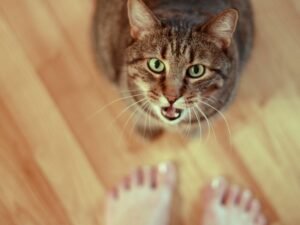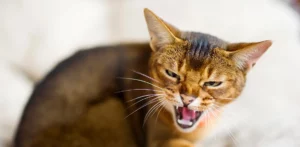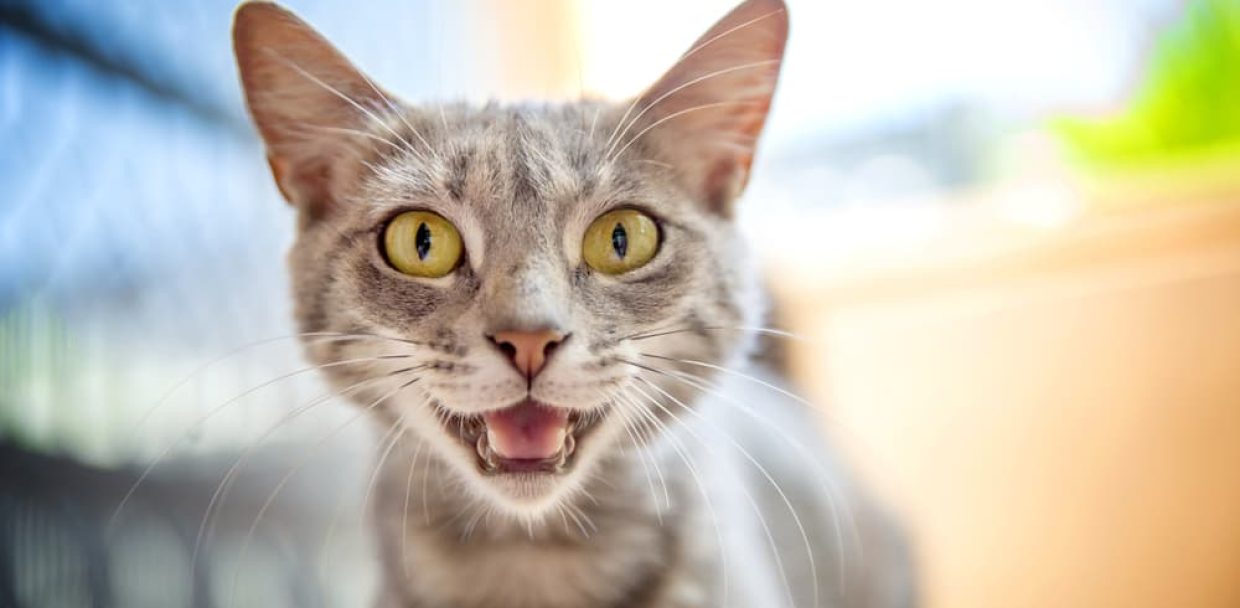If you own a cat then you must have heard different sounds produced by your cat. The vocalization differs every time. The most common sounds that you may notice are meowing growling, hissing, and purring.
What about other sounds? Are you aware that cats can produce more than 100 different sounds? Mind-blowing, right?
In this blog, we are going to talk about the trill sound. It is among the sound that many people do not know and wonder what it is when they notice their cat making it. We are going to break down the reasons for your cat producing trill sound and how it is different from other cats’ sounds.
 If your notice your cat trilling at you and looking away then it wants you to follow somewhere. Sometimes they might trill when jumping telling you to follow it. Your cat might want to show you something that it has caught. It can be anything even a dead animal. So, be prepared.
If your notice your cat trilling at you and looking away then it wants you to follow somewhere. Sometimes they might trill when jumping telling you to follow it. Your cat might want to show you something that it has caught. It can be anything even a dead animal. So, be prepared.
 Hissing is mostly associated with a negative reaction in the cat. This sound is often combined with defensive body language to express its fear and anger.
Hissing is mostly associated with a negative reaction in the cat. This sound is often combined with defensive body language to express its fear and anger.
What is Trill?
Think of a sound that is a mix of meow and purr and is high-pitched. Unlike other sounds of a cat, it is produced with a closed mouth. Instead of pushing the air through the mouth, the air is pushed through the vocal cords. It sounds on the cuter side like an extended ‘rrrowe’ with a high pitch at the end like asking a question with vibrato. It is a vocalization made by the cat to express itself. The sound lasts for a short time, lasting only one or two seconds. Trill sounds can’t be heard often as other cats’ sounds but some cats trill frequently. Most of the time trill sound is associated with cats’ positive emotions. Many people are not aware of how the cat is able to learn to produce the trill sound. Trilling is a natural social behavior that they have adopted from their mother cat between the ages of two to seven weeks. Cats who grew up without adult cats sometimes never discover the trill sound or even care to use it.Breeds of Cat that prefer Trilling
Many cats have different tendencies to do different activities. It depends upon the personality of the cat. Here are some cats breed that enjoy trilling: -Bengal -Siamese -Peterbald -Ocicat -Turkish Van -Sphynx -American BobtailWhy does Cat Trill?- Reasons
Although no one is able to identify the sure reason behind the trilling behavior of the cat, different studies have shown that trilling is most of the time associated with the positive behavior of the cat. As we don’t speak cat language to be sure what it means, here are some researched guesses behind your cat’s behavior.Form of Greeting
Trilling is the cat’s personal language. They often trill to greet their fellow human being or other cats. You might have sometime noticed your cat trill when you get home. There’s a good chance that your cat is saying you hello. When greeting other cats, the trill is the most common sound that they use. Many think that cats meow at each other but trill is the most used sound. They only meow at human beings.Seeking Attention
When the cat is little, its mother cat used trilling to get its little one’s attention. So, many cats have adopted his behavior and may use it now to get your attention. When the trilling is associated with body language then you can learn different things about your cat. If your cat is headbutting you including trilling then it wants your attention. Your cat might want to pet you or spend time with it. If your notice your cat trilling at you and looking away then it wants you to follow somewhere. Sometimes they might trill when jumping telling you to follow it. Your cat might want to show you something that it has caught. It can be anything even a dead animal. So, be prepared.
If your notice your cat trilling at you and looking away then it wants you to follow somewhere. Sometimes they might trill when jumping telling you to follow it. Your cat might want to show you something that it has caught. It can be anything even a dead animal. So, be prepared.
Asking Food
Another reason that your cat trill is because it wants food. Your cat might be hungry and want you to refill his bowl. Sometimes your cat might be simply asking for snacks.Expressing Happiness
As we have mentioned, trilling is most of the time associated with the positive behavior of the cat. it is thought o be highly thought to be a way your cat shows affection. You may notice your cat trilling when seeing you or other cats. By doing this your cat is expressing its happiness. Your cat is happy to see you around.Suprised
Have you noticed your cat trill whenever your try to wake it up? It is surprised by your sudden appearance. Whenever your cat gets surprised by something or someone then it produces a trill sound. Suprise elements can be both positive and negative. If your cat produces a positive reaction then your cat trills.When is Trilling a Problem?
Most of the time trilling is a positive sign for cats. It means that your cat is happy and is complimenting you. So, you do not need to worry when your cat trills like other sounds. As your cat gets older different complications are bound to happen, so you may need to keep an ear when your cat trills. It might be some indication of something serious. Sometimes when your cat is in pain or is sick then the cats may trill more than they usually do. When their hearing weakens they trill to produce louder noises. Sometimes the elder cat trills at an inappropriate moment. This can be also because of dementia, cognitive dysfunction. In such a case you might need to keep an eye on your cat. If you notice such behavior then you might need to address the problem. If you are not sure about the problem then you should take your cat to the vet and get them checked.Do all Cat Trill?
Trilling is associated with the personality of the cat. If the cat is of an extroverted personality then your cat is likely to trill most of the time. Most introverted cats are shy and do not vocalize as often as extroverted ones. Also, trilling is a behavior that the cats pick up from the adult cat. If a cat grew up without the supervision of the adult cat then it is likely that the cat won’t be able to learn to trill its whole life. So, it is likely that not all cat trills. If your cat does not trill then it is nothing to worry about. It doesn’t mean that your cat is unhappy or doesn’t like its owner. It is normal for a cat to not trill. There are others ways of vocalization that your cat can adopt.Cats Vocalization
Trilling is one of the many vocalizations. There are other vocalizations that cats use for communicating. Here are some of the common vocalizations that cat uses for communication and what they mean.Meowing
Meow has been the well know sound of the cat. Whenever we are told to make the around of the cat then we produce a ‘meow’ sound. Cat meow kinda resembles the human voice and can mean different things. An adult cat usually meows at a human being but doesn’t meow at other cats. Their meow can mean many things, like asking for attention, food, greeting, or dissatisfaction. It depends on how your cat expresses it.Howling
The howling sound is a low-pitched moan that comes from the throat of the cat and is quite loud. Cats may howl due to various reasons like when they are worried or feel discomfort. They also howl at another cat when it invades its territory. Cat hates their territory being invaded. So they howl to warn them. If the senior cats start to howl then it can be a sign of dementia or cognitive dysfunction.Hissing
 Hissing is mostly associated with a negative reaction in the cat. This sound is often combined with defensive body language to express its fear and anger.
Hissing is mostly associated with a negative reaction in the cat. This sound is often combined with defensive body language to express its fear and anger.




